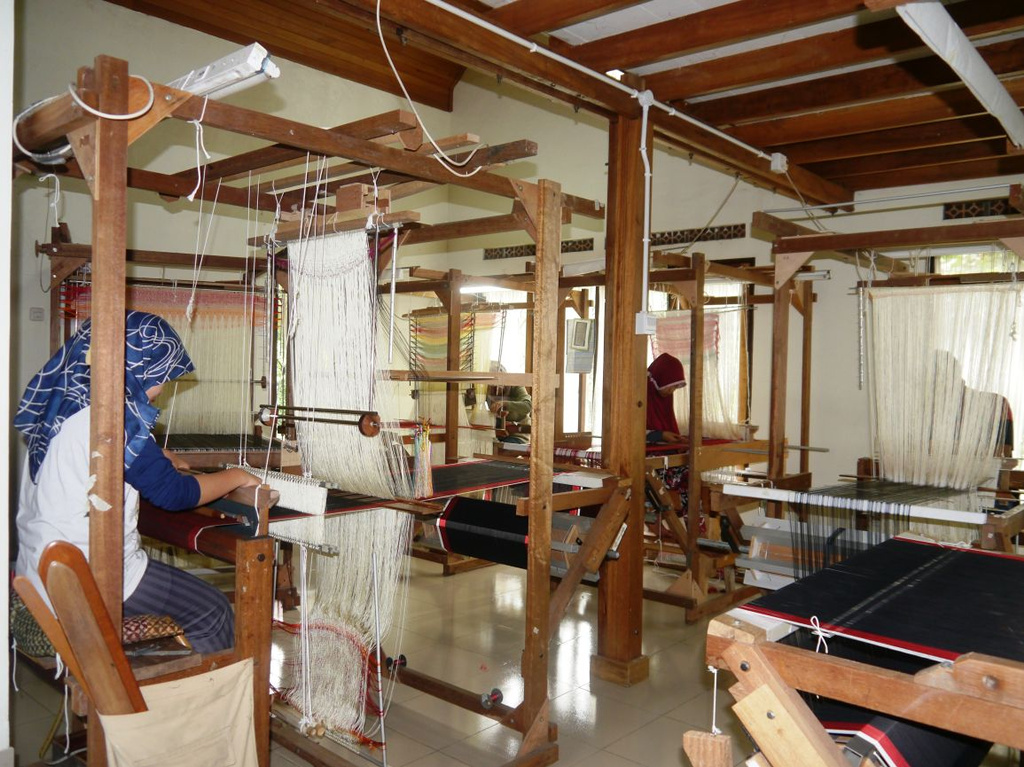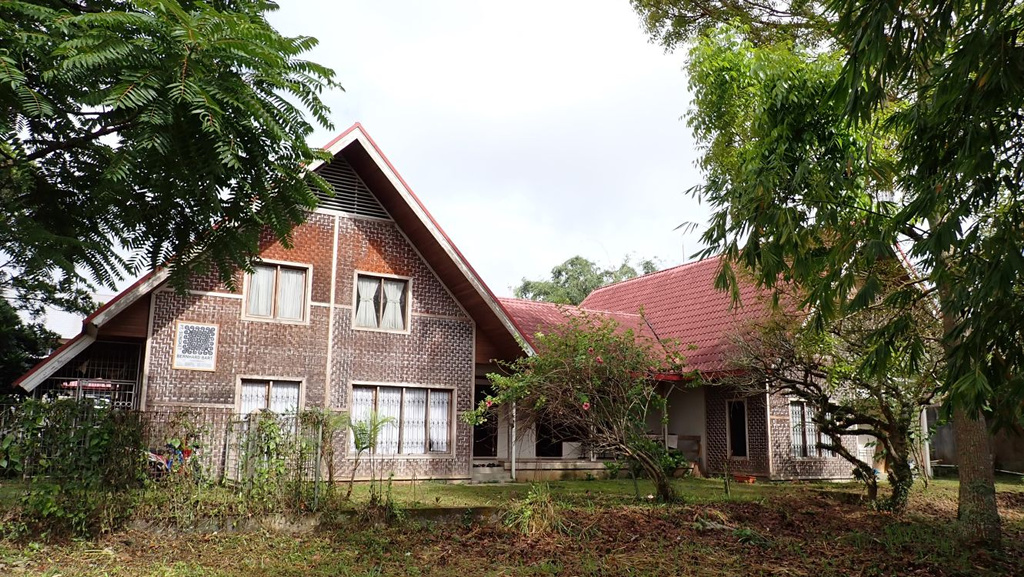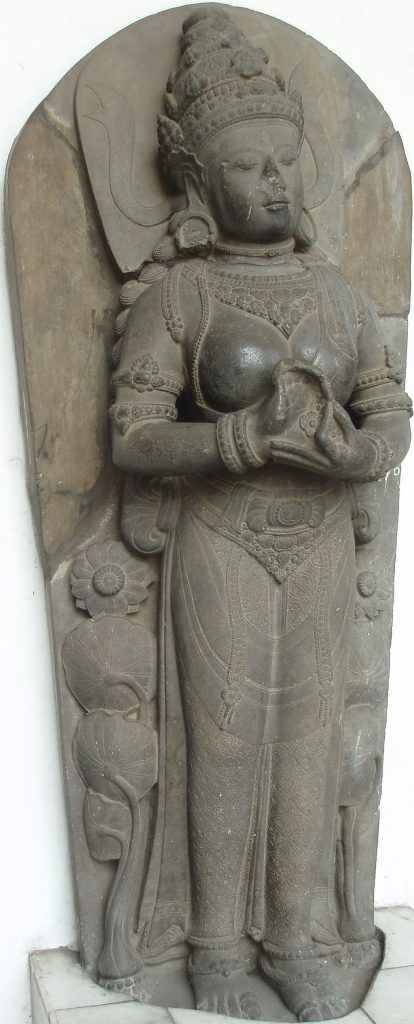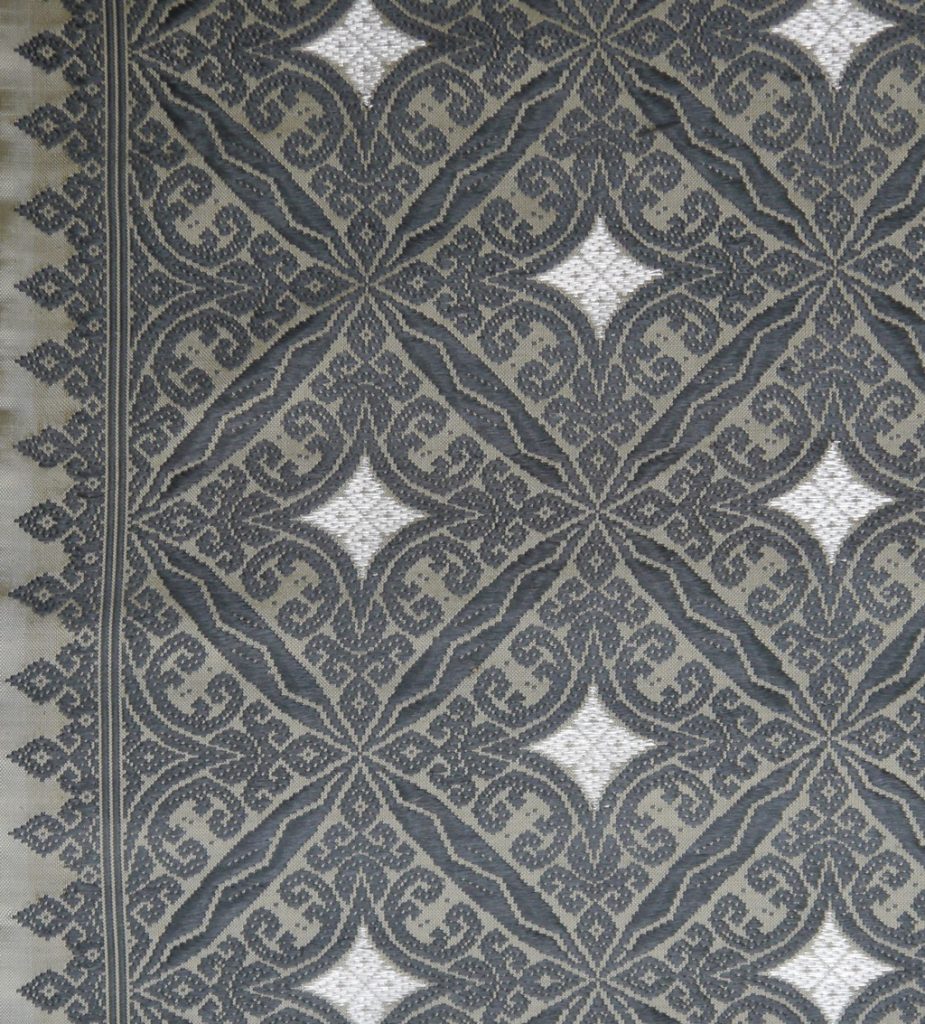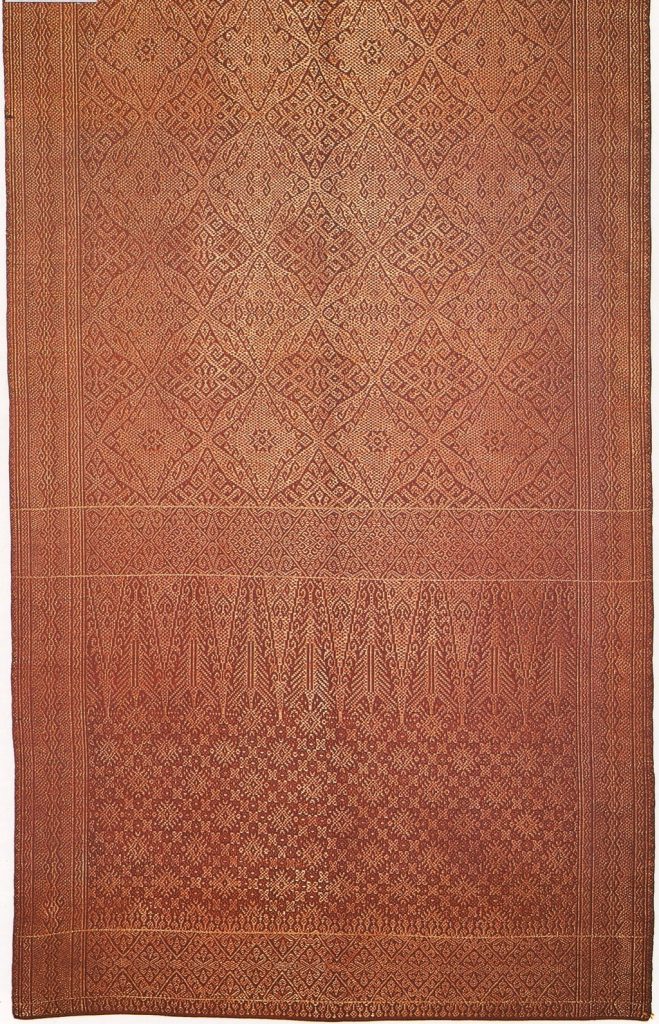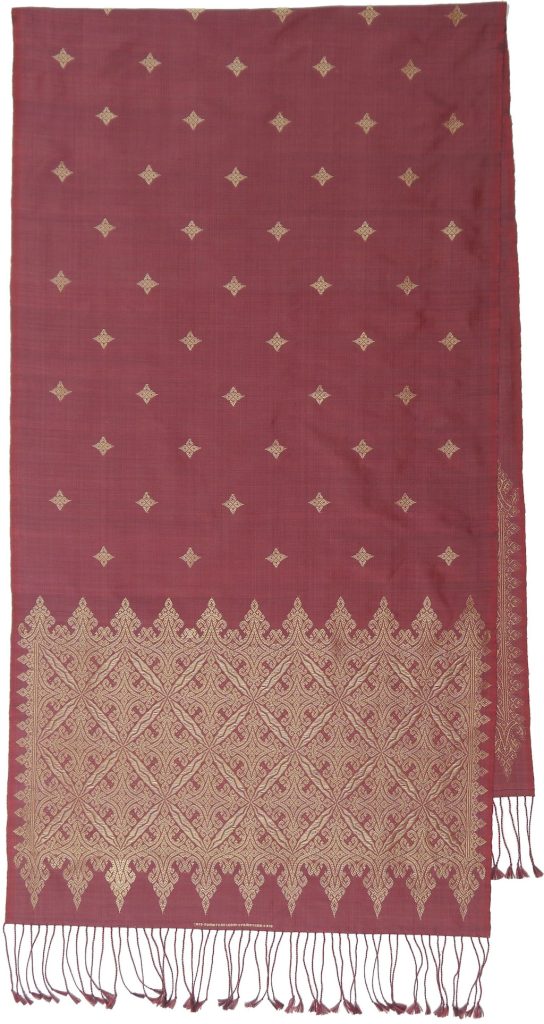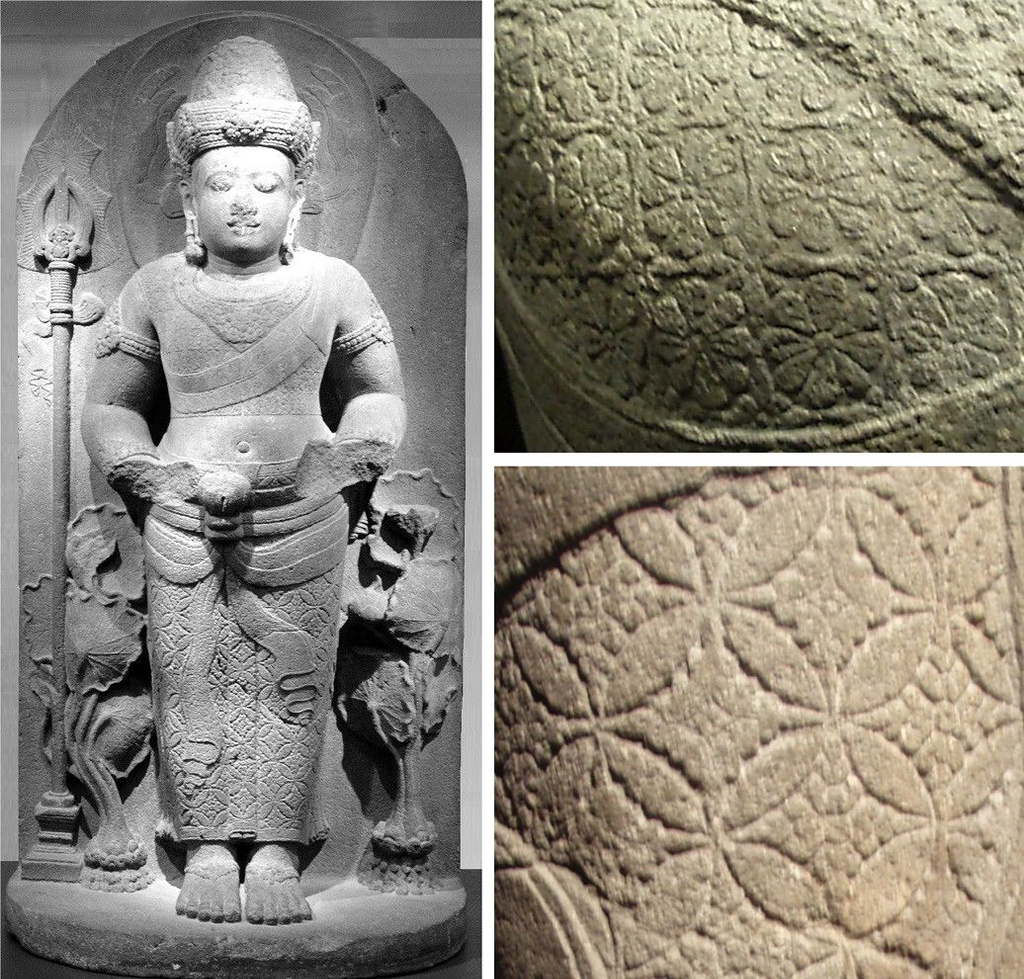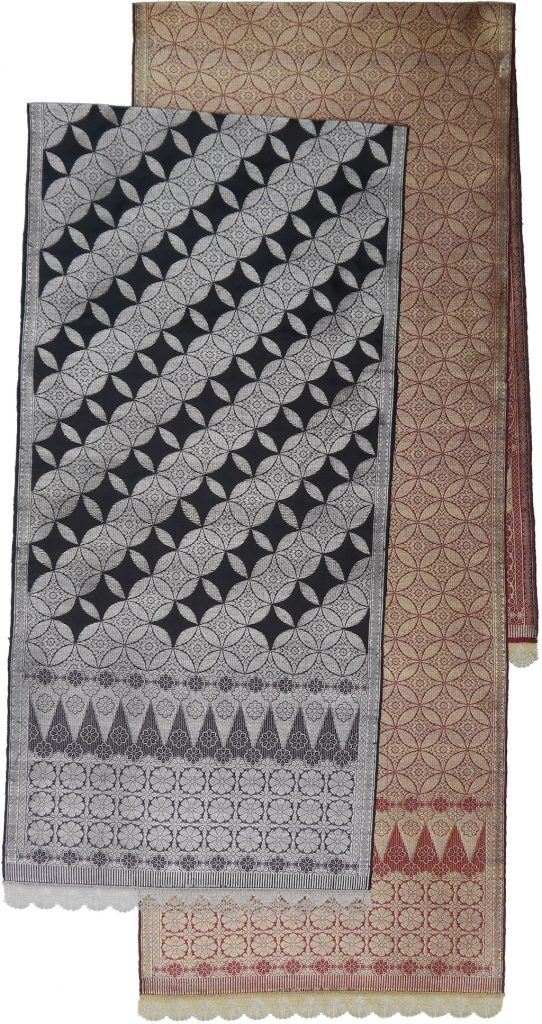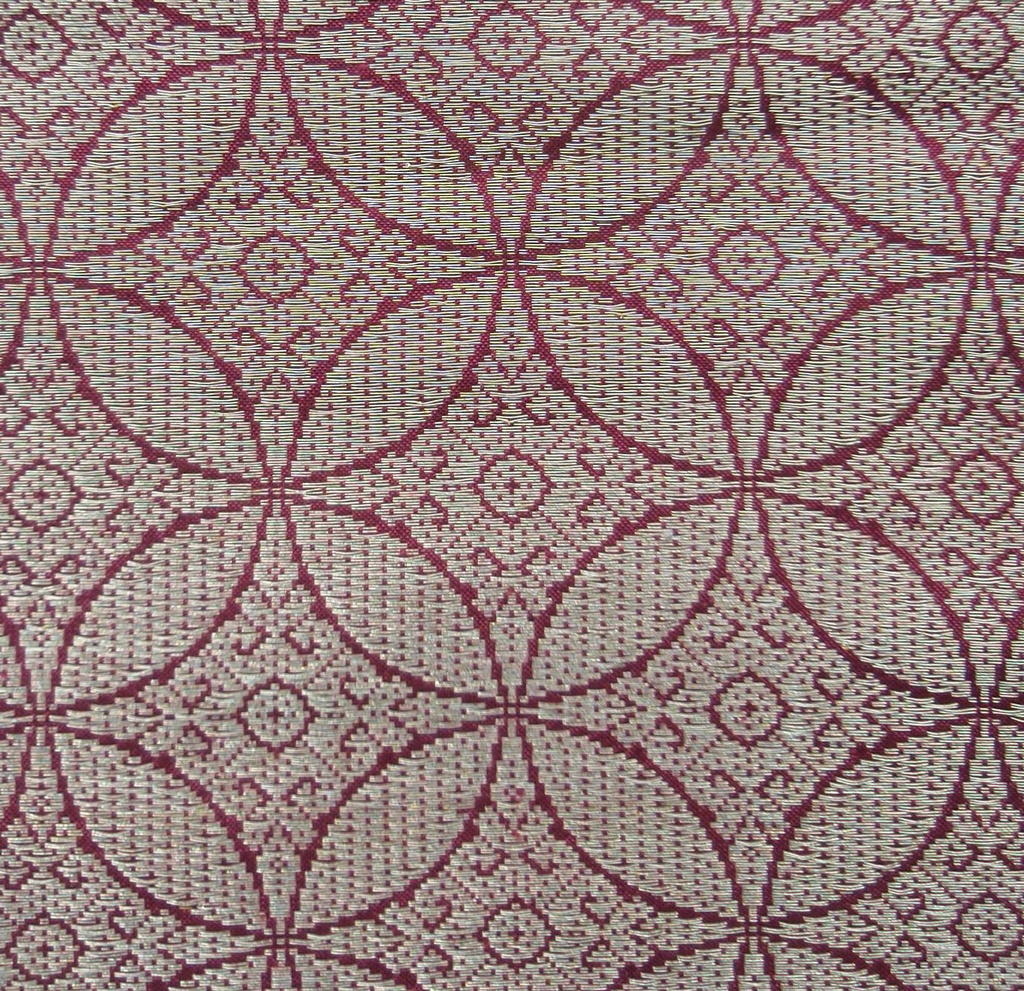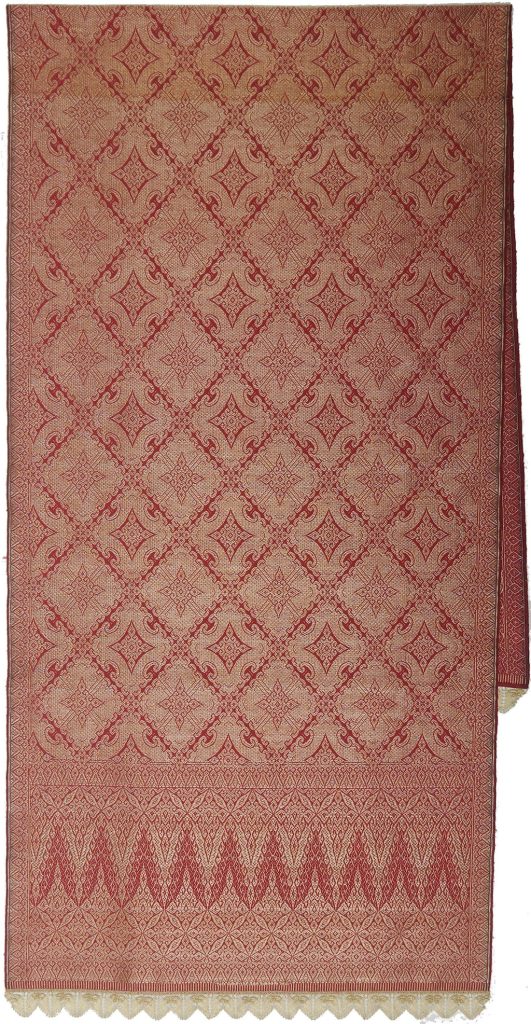Bernhard Bart writes about songket weaving inspired by stone statues from ancient Indonesia.
Working for my weaving studio, which has existed since 2008, I am constantly occupied with traditional motifs used in the songket weaving of the Minangkabau people in West Sumatra. I also researched motifs from other parts of Sumatra and Indonesia in general. Soon, my attention was drawn to other very interesting motifs.
Investigating textile motifs, I came across the stone statues of the Singasari and Majapahit period in the Museum Nasional Jakarta (MNJ), which show patterned textiles. Especially the three Buddhist statues of Sudhanakumara, Syamatara and Bherkuti from Candi Jago, Tumpang Malang, East Java, Indonesia (Singasari period, thirteenth century), caught my attention, since the main motif on their hip cloths shows an extraordinary similarity to the motif balah kacang (split peanut) used in Minangkabau songket weaving till today.
It was a challenge to copy the carved motif from the Syamatara statue and to adapt it for songket weaving. The result of the brocade technique can be seen below.
- The statue of Syamatara (MNJ inv.247b)
- Detail of the textile pattern on the garment of Syamatara.
- Detail of a shoulder cloth showing the same pattern; designed by Bernhard Bart (see also fig.27a).
- An old selendang (shoulder cloth) from Batusangkar (ca. 1900) showing the balah kacang motif in its body (Voelkerkundliche Sammlung St.Gallen, Switzerland).
- The Syamatara textile
My interest in textile motifs on stone statues was aroused.
The statue of Shiva-Nandisvara in the Museum Volkenkunde, Leiden, The Netherlands (inv.1403-1624) is from Candi Singasari, East Java, approx.1310. It is a statue of a Hindu god and shows the motif kawung (intersecting circles).
- The statue of Shiva-Nandisvara. and two details of the textile patterns on his garments.
- The Nandisvara textile
I transposed the two main motifs seen on his garments—that is, kawung on his hip cloth and tampuk manggis (calyx of mangosteen fruit) on his upper bodice—from stone to cloth.

The statue of Bhairava-Buddha. Detail of the textile pattern on his loincloth.A colossal statue of Bhairava-Buddha from the Majapahit period (fourteenth century) was found in Rambahan, Padangroco, Dharmasraya, West Sumatra, Indonesia. Now, it is in the Museum Nasional Jakarta (inv.6470). Copying the chiselled motifs on its loincloth and designing a whole cloth that could be woven in the songket technique was challenging as well.
A cloth like this was fit for a king and, therefore, also for a statue of a god or goddess.
I think it is an interesting question what sort of textile patterns served as models for the sculptors. In my opinion, the textile patterns they were inspired by were block printed either in colour or maybe with glue, which was then adorned with gold leaf (gold-leaf glue work = Prada). A cloth like this was fit for a king and, therefore, also for a statue of a god or goddess.
✿
This article is an extract from “Textile Patterns on Stone Statues from the Singasari and the Early Majapahit Period (13th+14th century) used in Songket Weaving and a Comparison of the Motifs Kawung and Balah Kacang” Textiles Asia Journal, May 2016, Volume 8, Issue 1.
References
Eggebrecht, Arne und Eva: Versunkene Koenigreiche Indonesiens. Katalog zur Ausstellung im Roemerund Pelizaeus-Museum, Hildesheim. Mainz, von Zabern, 1995.
Green, Gill: Window Dressing: Décor Textiles at Angkorian Period Temples. In: Textiles Asia, vol.6, issue 3, January 2015.
Pullen, Lesley: Textile Designs in Stone: The Legacy of Medieval Javanese Sculpture. In: TAASA Review, vol.22, no.1, March 2013.
About us

My wife (Erika Dubler Bart) and I (Bernhard Bart) are both Swiss, but since 2008, we have lived in Batu Taba near Bukittinggi in West Sumatra, Indonesia, 35km south of the equator. There, we run our own songket weaving studio. As an architect, I designed the house and weaving studio and also made all the weaving tools myself.
I retired in 1996 and, at that time, travelled quite extensively in West Sumatra. I soon noticed the decline in all handicrafts, especially songket weaving. I founded this studio to revive and maintain the knowledge of the traditional handweaving process of making songket.
We had to have Indonesian partners for this business and tried it three times, but in each case, we had to separate after a few years due to different views about the studio’s goals. Since 2023, we have been independent.
I myself trained young people between the ages of 18 and 25 as weavers, and today, the workshop is able to carry out the entire production process under one roof: making the looms, designing the patterns, dying the silk (mostly with organic dye), reeling the silk, warping, making the heddles, picking the pattern, weaving, and finishing the cloth with pillow lace or fringes. Only the silk and metallic threads are purchased outside.
Since we are both already 78 years old, the pace is quite leisurely. After breakfast, we usually make a round in the studio, where the weavers start working between 8 and 9 in the morning. The required hours are 7 hours a day (with a one-hour lunch break), 6 days a week. We employ 13 young people from the village and other places close by. They are allowed to bring their small children with them to the studio so they can also take care of them during working hours.
If necessary, we discuss the daily tasks and organise the work with our head weaver, Tisra Wayhuni, but usually, everything is already running smoothly. We also develop and discuss future projects with her.
We chat with the weavers, look at their progress, try to find together a solution for a problem that may have arisen or discuss future tasks.
Later we do some office work. I am designing new patterns, for example, and Erika is doing the accounts or keeping the statistics up-to-date. Sometimes I also do some carpentry to adjust and refine our looms and weaving tools. Of course, household chores have to be done as well and twice a week we go to the local market nearby to buy fresh vegetables and fruits.
Sometimes, unfortunately rather rarely, there are visitors and we enjoy showing them the studio, always including our weavers and letting them explain themselves what they are doing at the moment.
Bukittinggi has a very pleasant climate, and we like to sit on our balcony drinking tea or coffee, reading, or watching the birds and butterflies in the garden.
Luckily, we can enjoy this increasingly and have gradually less and less work to do, since we are delegating more and more responsibilities to our weavers to make them capable of running the studio themselves.
Visit thesongket.com and follow @songket_bernhardbart
